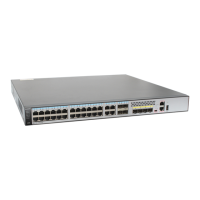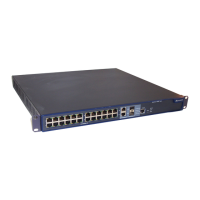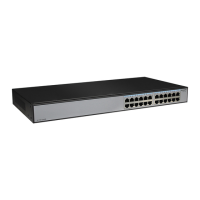Command Manual – Getting Started
Quidway S8500 Series Routing Switches Chapter 1
Commands Used to Log in to Switch
Huawei Technologies Proprietary
1-3
Example
# Configure to automatically execute telnet 10.110.100.1 after the user logs in via VTY
0.
<Quidway>system-view
System View: return to User View with Ctrl+Z.
[Quidway] user-interface vty 0
[Quidway-ui-vty0] auto-execute command telnet 10.110.100.1
1.1.3 command-privilege level
Syntax
command-privilege level level view view command
undo command-privilege view view command
View
System view
Parameter
level: Specifies the command level, ranging from 0 to 3.
view: Specifies the command view, which can be any of the views supported by the
switch.
command: Specifies the command to be configured.
Description
Use the command-privilege level command to configure the priority of the specifically
command of the specifically view.
Use the undo command-privilege view command to restore the default command
priority.
The command levels include visit, monitoring, configuration, and management, which
are identified as 0 through 3 respectively. An administrator assigns authorities as per
user requirements and allows them to operate in corresponding views. When a user
logs in to the switch, the command level that it can access depends on two points. One
is the command level that the user itself can access, the other is the set command level
of this user interface. If the two levels are different, the former will be taken. For
example, the command level of VTY 0 user interface is 1, however, user Tom has the
right to access commands of level 3; if Tom logs in from VTY 0 user interface, he can
access commands of level 3 and lower.
By default, ping, tracert, and telnet are at visit level (0); display and debugging are at
monitoring level (1); all the configuration commands are at configuration level (2); and
FTP, TFTP and commands for file system operations are at management level (3).

